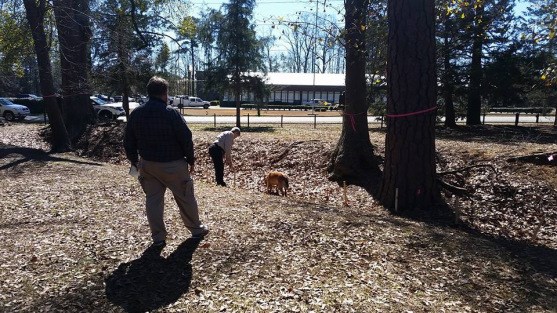Last updated: August 29, 2019
Article
Civil War Prison Camp, Thomasville, GA

NPS, SEAC

NPS, SEAC

LOC
During the Thomasville prison camp’s two and a half week existence under the command of Colonel Henry Forno, hundreds of inmates died from illnesses that ran rampant through the camp. Some of the deceased are believed to have been buried in or moved to the “Methodist Cemetery”, that may be Laurel Hill Cemetery or Old Cemetery. Smallpox in particular took a massive toll on the inmates. Victims of the disease are believed to have possibly been buried in mass graves in the ditch surrounding the prison. Historic accounts also record that the camp was burned when the prisoners were removed and returned to Andersonville. Stories have circulated that some bodies may remain buried on the prison grounds.
Ground Penetrating Radar (GPR) and search and recovery dogs, a.k.a. “cadaver dogs”, were used at the site prior to any excavation in the hopes of pinpointing areas where underground features and burials might be located. Several different dog teams gave similar alerts in the trench indicating the possible presence of human remains. The GPR also indicated the presence of anomalies consistent with graves in several areas.

NPS, SEAC
A series of systematically excavated units produced 19th and early 20th century artifacts.SEAC archeologist Jeffrey Shanks reminded visitors and trainees that these objects will still part of the history of the community. But, nothing could be specifically associated with the military occupation of the site and no identifiable human burials.
The excavation did reveal a thin layer of black organically-rich soil with evidence of burning at the bottom of the trench that appeared at the same level in multiple areas. Soil samples from this burn layer were collected and will be submitted for analysis to determine whether or not they contain the chemical signature of human decomposition.

NPS, SEAC
Check out the story in the Thomasville Times-Enterprise here!
—
The FBI’s ERT has worked with other archeologists in Florida to learn about excavation methods. Follow the link to watch a video of City of St. Augustine archaeologist Carl Halbirt teaching excavation methods to FBI agents.

NPS, SEAC

NPS, SEAC
